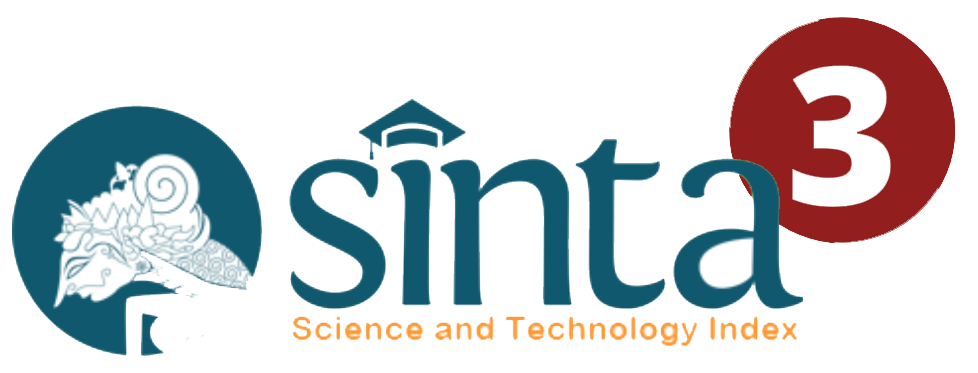BURNOUT PROFILE OF ELEMENTARY SCHOOL TEACHER EDUCATION STUDENTS (ESTES): FACTORS AND IMPLICATION OF GUIDANCE AND COUNSELING SERVICES
DOI:
https://doi.org/10.22460/pej.v4i1.1640Abstract
This study departs from the discovery of the phenomenon of the burnout of learning experience of students, especially those who are already in the fourth or fifth semester of lecture activities. Symptoms of burnout experienced by students are in four areas, namely physical, emotional, intellectual, and low motivation. This study aims to find the profile of students' learning burnout, the underlying factors and their implications for guidance services. The method in this study uses a quantitative approach with descriptive analytic. The sample in this study was 53 randomly assigned ESTES. The instrument used in this study was a questionnaire to capture data about the learning burnout profile and also the underlying factors. The results showed that 60.38% of students experienced high levels of learning burnout and the rest were low. Based on the analysis, the factors that cause students' learning burnout as a result of the study show that the factors that are at a high rate are not able to accept if the grades are not in line with expectations and  not confident to consult with lecturers about learning activities. The recommendations of this study are aimed at Academic Advisors, UPT LBK, Study Programs, and further researchers.References
Abrams, et al. (2005). Children and Adolescents who are Depressed: An Ecological Approach. Professional School Counseling, Feb 2005 [Online]. Tersedia: http://www.findarticles.com/p/articles. [7 February 2008].
Alwasilah, A. (2007). Quality Teaching at a Leading and Outstanding University: A Conceptual Framework for Action and Development. Bandung: UPI Press.
Bella, Mei Mita, Ratna, Luluk Widya. (2018). Perilaku Malas Belajar Mahasiswa di Lingkungan Kampus Universitas Trunojoyo Madura. Kompetensi. 12(2), 280-303.
Cui, Guanyu Cui1, Yao, Meilin, Zang, Xia. (2017). The Dampening Effects of Perceived Teacher Enthusiasm on Class-Related Burnout: The Mediating Role of Perceived Autonomy Support and Task Value. Frontiers in Psychology. 8, 1-11.
Dami, Zummy Anselmus, Styorini, Indah Novi. (2016). Hubungan Layanan Bimbingan Belajar dengan Motivasi Belajar. Jurnal Cakrawala. 5(11), 958-974.
Daschmann, Elena C., Goetzl, Thomas, Stupnisky, Robert H.(2011). Testing the predictors of burnout at school: Development and validation of the precursors to burnout scales. British Journal of Educational Psychology. 81(3), 421-440.
Dalton. (2003). “Student Learning Burnout and Perceptions of a Democratic School Environmentâ€. International Education Journal. 4(2),
Eren, Altay, Coskun, Hamit. (2016). Students' level of burnout, burnout coping strategies, epistemic curiosity, and graded performance. The Journal of Educational Research. 109(6), 574-588.
Fatmawati. (2018). Hubungan antara Kejenuhan Belajar dengan Stres Akademik. Psikoborneo. 6(4), 704-712.
Joseph A.B (1999). “Pattern of physical therapist students burnout within an academic semesterâ€. Journal, Physical Therapy Education, Spring 1999 [Online].Tersedia:http://findarticles.com/p/articles/mi_qa3956/is_199904/ai_n8835058/pg_9 [25 February 2009].
Khusumawati, Z.K. 2014. Penerapan Kombinasi Antara Teknik Relaksasi dan Self-Instructionuntuk Mengurangi Kejenuhan Belajar. Jurnal BK UNESA. 05(01), 1-10.
Liwsze, D. (2002). Student Burnout Rising. Balance in a Hectic World Not Easy for Over Stressed Students. Professional School Counseling, Feb 2005. [Online].Tersedia:http://www.findarticles.com/p/articles/mi_m0KOC/is_3_8/ai_n9775245/pg_5 [7 February 2008].
Mailita, Basyir, M. Nazir, Abd, Dahliana. (2016). Upaya Guru Bimbingan Konseling dalam Menangani Kejenuhan Belajar Siswa di SMP Negeri Banda Aceh. Jurnal Ilmiah Mahasiswa Bimbingan dan Konseling. 1(2), 14-26.
Maslach, C & Leiter, P.M. (1993). The Truth About Burnout. How Organizations Cause Personal Stress and What to Do About It. San Francisco: Jossey-Bass Publishers.
Muladi,Y. et al. (2001). â€Evaluasi Pelaksanaan Proses Pembelajaran Bidang Studi di FPTK UPIâ€. Jurnal Penelitian Pendidikan. 1(35), 103-118.
Penington, E.J. (2007). Classroom Burnout. [Online]. Tersedia : media.collegepublisher.com [19 Agustus 2008].
Pekrun, R., Goetz, T., Daniels, L. M., Stupnisky, R. H., & Perry, R. P. (2010). Burnout in achievement settings: exploring control value antecedents and performance outcomes of a neglected emotion. Journal of Educational Psychology, 102(3), 531-549.
Pham, J. (2007). Burnout Afflicts Students: the Life of a College Student. Articles [Online]. Tersedia : www.findarticles.com [6 Juni 2008].
Semiawan, R. C. (1999). Pendidikan Tinggi: Peningkatan Kemampuan Manusia Sepanjang Hayat Seoptimal Mungkin. Grasindo: Jakarta.
Sharp, John G., Hemmings, Brian, Kay, Russell, Murphy, Barbara, Elliott, Sam Elliott. (2017). Academic burnout among students in higher education: A mixed-methods exploration of characteristics, contributors, and consequences. Journal of Further and Higher Education. 41(5), 657-677.
Supriadi, D. (2001). Isu dan Agenda Pendidikan Tinggi di Indonesia. Remaja Rosdakarya : Bandung.
Skovholt. (2003). Student Learning Burnout Studied. Families in Society: The Journal of Contemporary Human Services. 1 Oct 2003.
Tam, Katy Y. Y., Poon, Cyanea Y.S., Hui, Victoria K.Y., Wong, Christy, Y.F., Kwong, Vivian W.Y., Yuen, Gigi W.C., Chan, Christian S. (2019). Burnout begets burnout: An experience sampling study on the impact of teacher burnout on student burnout and motivation. British Journal of Educational Psychology. Accepted 24 July 2019.
Wahyuni, Ervika Dewi Wahyuni. (2018). Faktor-Faktor Penyebab Tingkat Kejenuhan Belajar Pendidikan Agama Islam (PAI) pada Jurusan PGSD di Universitas Islam Balitar. Konstruktivisme. 10 (2), 154-162.
Yusuf LN., S. (2004). Psikologi Perkembangan Anak dan Remaja. Bandung: Remaja Rosdakarya.










